Monday and Thursday are studio days. On these days in particular, the third floor undergraduate studio is filled with a frenetic energy of design, research, and exploration. Students can usually be found talking excitedly with design professors and classmates in a habitat saturated with trace sketches, study models, and empty coffee cups. Every week we’ll share a completed project, churned out from this energetic studio environment.
Interested in having your work featured on our STUDENT WORK series? Check out our BRIDGE Contact page for submission details.
Wall Wall Wall Wall Wall | Fysal Amirzada and Clara Syme | 4A Rome Studio
Studio Description: The studio course is mounted in Rome, Italy, with the school’s own faculty and premises, and offers a unique opportunity to undertake design studies in a truly rich architectural heritage. The main focus is the nature of the institution and its relationship to the city and its culture.
Studio Professor: Lorenzo Pignatti
Project Description:
What is the physical experience of a wall? There is no singular answer, it depends on what the wall is made of, how high the wall is (relative to a person and context), the thickness of the wall, how old the wall is, the relation of the wall to other walls, the relation of the wall to the ground, whether the wall is observed up close or from a distance, whether you are experiencing the wall in a crowd or alone etc…
A border: Abstractly in plan a border is most often expressed as a line. This line may have colour or thickness but the commonality between most representations lie in their one dimensionality. This symbolic representation of a border has little correlation with the actual experience of a border.
We aim to tease apart the idea of a border using an architectural language of walls. Our design asserts the importance of a borders’ physicality and temporal qualities.
Formal strategy: The walls converge and disperse, they may overlap, intersect or stand alone. They may be part of an additive or subtractive gesture.
Material strategy: We have defined a selection of 5 different materials; stone, marble, copper, glass, and fabric. Each material can represent a border with inherent physical properties (ephemeral, thick, flexible, sharp, smooth, etc…)
In combination, the material and formal strategy creates even further complexity by producing a range of temporal registration. For example a piece of exposed copper will oxidize and bleed onto the stone wall below. If protected/enclosed, the same combination of copper and stone will maintain its original state. There is a range of instances of decay and preservation depicted throughout our strategy.
Our design addresses the scale of a person, building, and monument. While at times approaching the scale of the Aurelian wall, our intervention doesn’t seek to exist as an icon or monument (We suspect Rome may be satiated on this front). Instead we aspire to address a range in scale, reflecting that of the context.


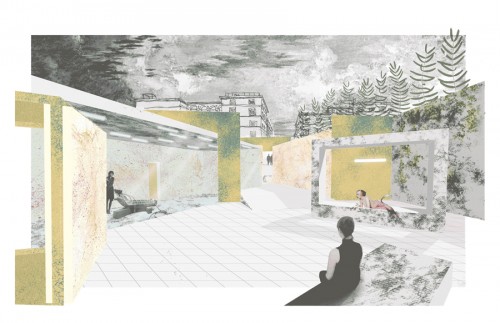
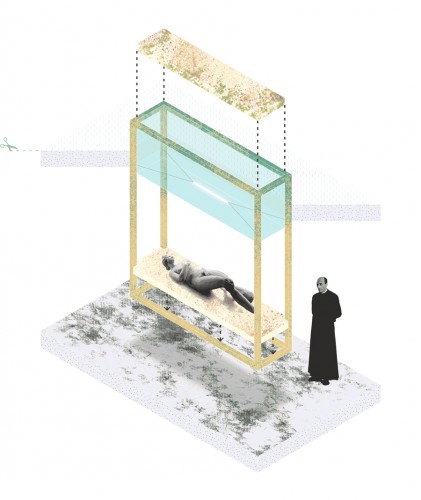
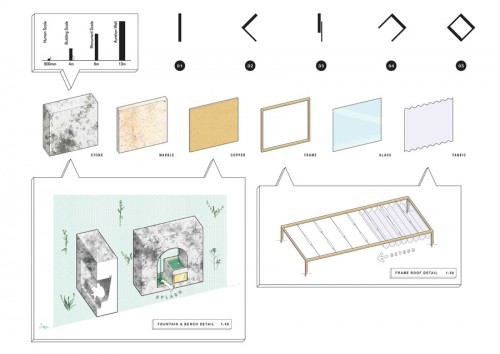
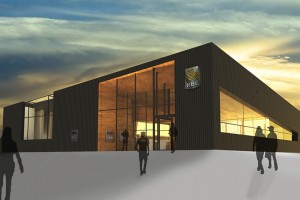
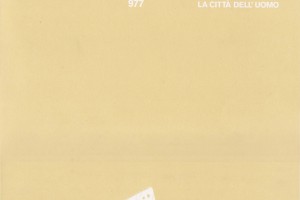
Leave a Reply